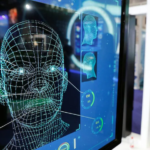13 years ago when i started out in the ICT industry there were no Māori software products, writing a macron was impossible, and as hard as this is to believe now, only two Māori web sites existed. There was no .iwi.nz nor .maori.nz and no corpus of Māori computer terminology, not even for the word computer or Internet existed in the Māori language.
Writing a macron was the biggest issue of the time in the 1990’s. There was debate whether we ignore the macron, double vowel or use an umlaut which required pressing a combination keys on the keyboard.
I wrote a 15 page article on how to create a macron and TPK produced a large report on the whole issue.
By this stage, myself and others had created all sorts of “fixes” which at the time were technologically brilliant. Some web sites even chose to use a picture of a macron as creating a macron was just too difficult.
Eventually a software company created an extremely expensive software product “Te Kete” with customized Māori fonts that essentially placed another dot in between the umlaut so the umlaut appeared to be a macron.
Included was also a keyboard shortcut to create a macron by using the “Crtl” button then a vowel. The pricing structure was so high that it was really only for government departments and universities exclusive use.
Many of us chose to stick to our own creations and utilised software such Keola Donaghy and Mark Laws Macintosh software and his fonts for creating macrons.
In teh following years there were a number of other reliable macron solutions and Microsoft created a default Māori keyboard and Macintosh included Keola software as a locale into their operating system.
But there was still the issue that a macron would work on one computer but not another. It was all about the other persons technology. The issue is still, to a degree in existence today. But perhaps the biggest issue to create macrons today is choosing which software to use.
Being able to write in Māori created another issue. How do we spell check te reo Māori. Several years after Te Kete a few Māori spell checkers were on the market but neither of them was really comprehensive and the pricing structure again put many people off using them. Then Te Ngutu Kura was put in the public domain ensuring Māori editing tools were free for anyone.
Te Kete revoltionised Māori language in ICT. As part of the product, there was an option to switch between Māori or English for Microsoft Office menus. The word list formed the basis of the first corpus of Māori language terminology which is still used and refined today. The original small list of a few hundred terms has certainly increased over the years to excess of 20,000. I doubt this would have been possible without the continuing effort of passion of people such as Te Taka Keegan (PhD) whom I often consulted with over the years to ascertain a new word.
The former Netscape Internet Browser in the late 90’s was available to be translated into any language. The first attempt at having any mainstream software in te reo Māori occurred here. At one stage Kamera Rahara from maori.org.nz put her name down as the contact person. It was a mammoth job that required specialist knowledge in programming and lingusts that Māori were not ready at that time to begin or complete such a project. It predecessor Mozilla is currently being modified by Konrad Dear.
With the corpus of Māori ICT terms being mature, this has created the opportunity to localize software at a greater pace than ever before. Most of the software to be localized relies on a similar corpus hence reducing the time for expert translators. The software is becoming increasing easier to translate as there is a global trend to either offer software and systems in a local language or the ability to locally translate.
Today in 2008 due to globalisation and passionate Māori ICT experts, we can read and write Māori on a computer and there are no barriers to obtain Māori software. Macrons can be in web addresses and there are Māori 2nd level domains in New Zealand. Microsoft Windows and a large range of software is currently available in Māori or being translated into Māori. If it is not, then there is more than likely a chance that it can be translated with ease, and Google is also available in Māori.
An important lesson to any non English speaking language who are developing their own tools is that the Māori language software and tools made its greatest advancement while being kept out of the commercial arena.
.
.
.





Leave a Reply